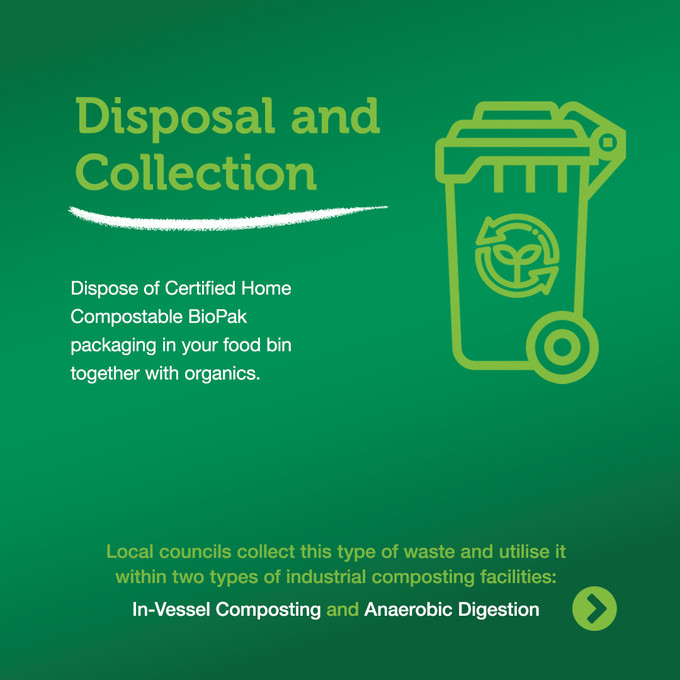
How Does Composting Work?
3rd Jan 2020
What are BioPak Aiming to Do?
Dealing with the end of life of a product can be challenging. Dealing with a product’s end of life is a challenge, as the waste industry—and the participants in the industry—have set methods of disposing of waste. This often means the majority of waste does not end up where it should. BioPak’s aim has been to develop a working solution for organic waste. This waste—created in offices, cafes, restaurants, by caterers in events, stadiums, and function centres—needs to end up in the compost heap. That has been BioPak’s challenge. Now, it is their responsibility to build more of the necessary infrastructure to meet this challenge. More consumers than ever are interested in diverting organic waste from landfill—but they find the process from the plate to the loading dock difficult. By using 100% compostable materials, BioPak is giving customers more opportunity to ensure the maximum possible amount of food waste is diverted.
What is their Composting Process?
The composting process is a lengthy but rewarding one. Food waste and compostable packaging is collected by BioPak’s designated vehicle, which is specifically designed for wet waste like food scraps. Once the material is collected at the commercial waste premise, it is taken to BioPak’s composting facility. The food waste is inspected: the site workers look for materials that do not conform. Plastic is the main culprit, and staff are trained to know the difference between compostable and non-compostable packaging. In the preparation process, the waste is decontaminated and any non-organics are removed. The food waste is stored in tunnels: a forced aeration system where workers can control the oxygen content, moisture content, and most importantly the temperature of the waste. The food waste remains in these tunnels for 14 days. The waste must be hygienised (kept above 55 degrees), which ‘cooks off’ the food materials and deactivates any weed seeds or pathogens. In these 14 days, the compostable packaging is also broken down by the biology—microorganisms—in the composting process.After 14 days, the homogeneous compost is placed outside in rows, where workers windrow and compost it for a further five weeks. During this time the compost matures, and ends up as an Australian standard, good quality compost ready to be used on land.
And This is Important Because …
Sending food waste to landfill achieves the opposite of what composting does. Sending organic waste to landfill does the opposite of what composting does. As organic matter in landfill breaks down it releases methane, a greenhouse gas 28 times as potent as CO2. By composting organic waste, we are returning it to the land and giving it value as an important source of nutrients. In 2019, the coffee cup was the ‘poster child’ of single-use plastic. Gary Smith, BioPak’s CEO, feels it is irresponsible to isolate one source of plastic in that way. Composting all biodegradable waste, being aware of your entire plastic consumption, can lead to a simple circular economy solution and reduced waste to landfill.
Information taken from this video on BioPak's website. To read more about solutions to Australia's waste, or about other ways BioPak is creating a circular economy, check out our blog. To see our products, have a look at our website.
Planet Friendly Packaging acknowledges the traditional custodians of the land on which we work.


